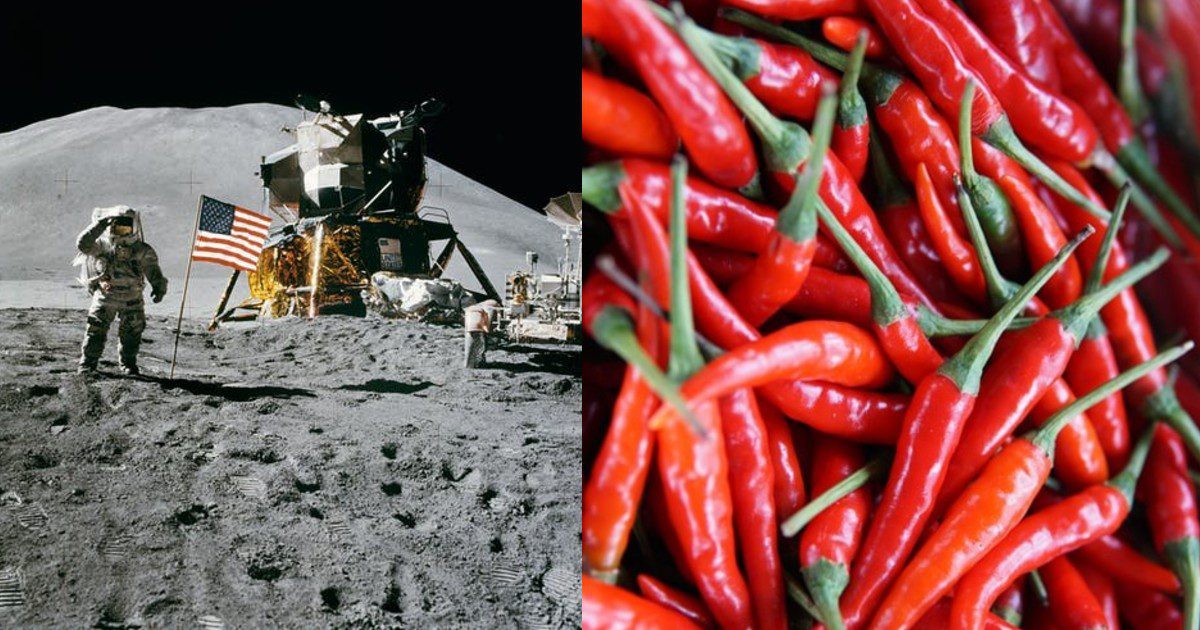Astronauts on the international space station have been trying to explore new things. Now they are doing something to spice up their diets. According to the National Aeronautics and Space Administration, astronauts aboard the ISS are growing red and green chile peppers. This is being done by astronauts as part of the food crop production experiment being carried by NASA. The US space agency said that this is one of the most challenging and longest plant experiments ever attempted aboard the orbital lab. The plants that are currently being grown on the ISS are from NuMex ‘Espanola Improved’ Seeds. This is a variety of hybrid Hatch chile pepper. These seeds arrived at the space station in June onboard a commercial resupply services mission of SpaceX. These seeds were then planted in Plant Habitat-04 (PH-04). For those who are unaware, Hatch refers to a town in southern New Mexico and a valley in the state famous for its chiles. Hatch chiles are considered to be the best as they have the perfect balance of flavor and heat.
The experiment to grow these seeds was initiated by NASA astronaut Shane Kimbrough. He inserted 48 seeds into the Advanced Plant Habitat (APH) on July 12. Kimbrough, a flight engineer, had earlier helped grow “Outredgeous” red romaine lettuce in space. He did this in the year 2016. A team with Kennedy Space Center’s Exploration Research and Technology programs has planted these chile seeds in a science carrier, a kind of device that slots into the Advanced Plant Habitat. The APH is one of the three chambers that can be used for growing plants by astronauts in the orbiting laboratory. APH is about the size of the kitchen oven and it is the largest facility for growing plants on the International Space Station. The APH is fitted with at least 180 sensors and controls. This allows researchers at the Kennedy Space Center to partially control the experiment. It is important as this means astronauts will not have to spend a lot of time tending to the crops on the ISS. Recently, a video was shared by Kennedy Space Centre on its Twitter page. The video shows astronaut Shane Kimbrough adding water to it. “This is for the first time in the history of NASA when astronauts are cultivating a crop of chile peppers on the ISS from seeds to maturity,” the space agency said in a release.
It will take four months for seeds to be ready for harvest. According to PH-04 principal investigator Matt Romeyn, it is one of the most complex experiments when it comes to growing plants on the ISS. They have already harvested veggies like lettuce and radishes. “This is because of the long germination and growing times. Earlier we tested flowering in order to enhance the chance for a successful harvest. This was done because astronauts have pollinated the peppers in order to grow fruits,” Romeyn said. Researchers spent around two on evaluating around two dozen varieties of pepper. Eventually, the picked hybrid Hatch pepper NuMex “Española Improved.” This experiment may result in offering astronauts something to satisfy their menu fatigue. This is because astronauts live in microgravity and can temporarily lose their sense of taste or small. Once the peppers are ready for harvest, the crew members will eat some of them and will send the remaining back on the earth for analysis. The crew members will share their feedback about how the flavor and texture. These peppers will also be analyzed and compared with those grown back on Earth. NASA is continuously looking at ways to improve and supplement the diets of space dwellers. This will definitely be a big step in this direction. According to Romeyn, harvesting plants and vegetables of different colors and smells helps in the improvement of well being of astronauts.
